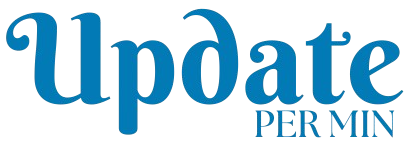So you’re about to graduate from college. Congratulations. But now you have to think about finding a job and, sooner than you may prefer, starting to repay your student loans.
It’s especially important to understand your options, experts on student borrowing say, because many aspects of the federal student loan system are in flux.
The system, which has always been challenging to navigate, is only now creaking back into full operation after years of Covid-era pauses on payments and collections. And court challenges to a low-cost repayment option, along with program changes floated by the Trump administration and House Republicans, have created a potentially confusing environment for new graduates.
“They’re graduating into a time of uncertainty around what their repayment options will look like,” said Abby Shafroth, the director of the National Consumer Law Center’s Student Loan Borrower Assistance Project.
One repayment plan, known as SAVE and introduced by President Joseph R. Biden Jr., significantly shrank monthly student loan payments depending on a borrower’s income and household size. But the program is in legal limbo because of a court challenge by two groups of Republican-led states. It’s unavailable now, and may not remain an option.
Three other, less generous “income-driven” repayment plans that link monthly payments to a borrower’s income remain available, but details could change. A measure under review in the House would reduce the various income-linked options to just one.
“Borrowers are getting dropped into a chaotic system that’s changing in real time,” said Winston Berkman-Breen, the legal director at the Student Borrower Protection Center, an advocacy group.
The upshot is that new graduates should keep in mind that the repayment plan they initially choose may look different in the coming months or years, depending on court decisions, government action and the effective date of any changes.
“They should focus on what’s available now and which plan makes the most sense now,” Ms. Shafroth said, “and expect they may have to revisit options later.”
Here’s what to know.
Do I have to start repaying my federal student loans right away?
Most federal student loans come with a grace period of at least six months after graduation. So you have some breathing room to get your life sorted and to choose a repayment plan. If you graduate in May, you typically won’t have to start paying until around November.
What should I be doing now to help repayment go smoothly?
Student borrowers are required before graduation to complete student loan “exit counseling” — often via a 30-minute online tutorial — to learn about their loan obligations and repayment options. Pay attention to the information because it can keep you on track, said Michele Zampini, the senior director of college affordability with the Institute for College Access & Success, an advocacy group.
Familiarize yourself with the available repayment plans, said Betsy Mayotte, the president of the Institute of Student Loan Advisors, which offers free assistance to borrowers. You can check the Federal Student Aid website to compare options and see any updates that may affect your loans.
It may sound obvious, but make sure that your loan servicer — the company that the Education Department has hired to send statements, collect payments and otherwise manage your loan — knows how to get in touch with you once you leave school, Ms. Mayotte said.
If you don’t know which servicer you have, log on to your account at the federal StudentAid.gov website to find out. Then get in touch to update your contact information, including your addresses for both email and physical mail. (You probably created the account when you applied for financial aid using the Free Application for Federal Student Aid, or FAFSA, form.)
If you have loans from outside the federal government, such as a private bank, those won’t show up on the Federal Student Aid website. If you can’t find the original loan documents, try looking for the lender’s name on your credit report, Ms. Mayotte said.
When should I choose a repayment plan?
Some experts said borrowers should apply as soon as possible for an income-driven plan to get their applications in the queue. But Scott Buchanan, the executive director of the Student Loan Servicing Alliance, an industry group, said borrowers in a grace period should wait to submit an application for an income-driven plan until a month or two before they are scheduled to start paying. If they apply more than 90 days before then, he said, their servicer will reject it as a “stale” application. For those who have to start paying in November, he said, submitting a form in September makes sense.
On the other hand, Mr. Buchanan said, don’t wait until the last minute or you’ll end up scrambling to put a plan in place.
Processing of income-driven repayment plan applications had been on hold as a result of the legal challenge to the SAVE plan. But the Federal Student Aid website, last updated on Monday, says that servicers “have begun processing applications” and that the site will be updated as new information becomes available. There is a backlog of some 1.9 million applications.
How do I know how much my monthly payment will be?
Your monthly payment amount depends on which repayment plan you choose. The standard plan — the default option, unless you choose another — calls for repaying loan balances in 10 years.
Income-driven plans can lower your payments by tying them to your income level and household size. The repayment period, depending on the plan, lasts 20 to 25 years.
To get payment estimates under the various options, enter information about yourself and your loans into the Education Department’s online “loan simulator” tool.
Mark Kantrowitz, a financial-aid expert, advised borrowers to choose the plan with the highest payment they can afford. They’ll pay less interest over the life of the loan and will pay off the debt sooner. Borrowers can use “forbearances,” or temporary deferments, during short-term financial struggles and switch to a more affordable plan for longer-term difficulties.
Are student loan forgiveness programs still available?
Yes, but it’s complicated. For instance, borrowers in the Income-Based Repayment plan, which Congress created, can continue to have their loans forgiven if they make enough qualifying payments.
The Education Department, however, has temporarily paused time-based forgiveness for borrowers in two other income-driven plans, known as Pay as You Earn (PAYE) and Income-Contingent Repayment (I.C.R.), because a court ruling on the Biden administration’s SAVE plan raised questions about those plans as well.
Payments made in PAYE and I.C.R., however, can still count toward forgiveness if the borrower transfers to an Income-Based Repayment plan later, Ms. Shafroth said. She added that payments in PAYE and I.C.R. still counted toward the public-service loan forgiveness program, which erases remaining loan balances after 10 years of work in public-sector or nonprofit jobs. (People using the public-service option generally enroll in an income-driven plan.)
Additional changes may be coming. The Trump administration has solicited public comments on a review of the public-service program. President Trump signed an executive order in March that said the administration planned to exclude from the program certain organizations, such as those that “advance illegal immigration.”
Hundreds of comments have been posted online, many of them in support of the public-service program. Comments will be accepted through Thursday.




Average Rating